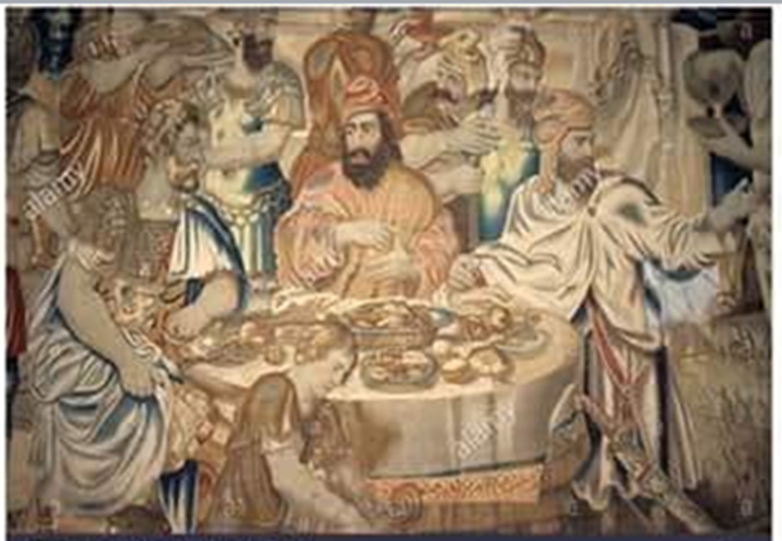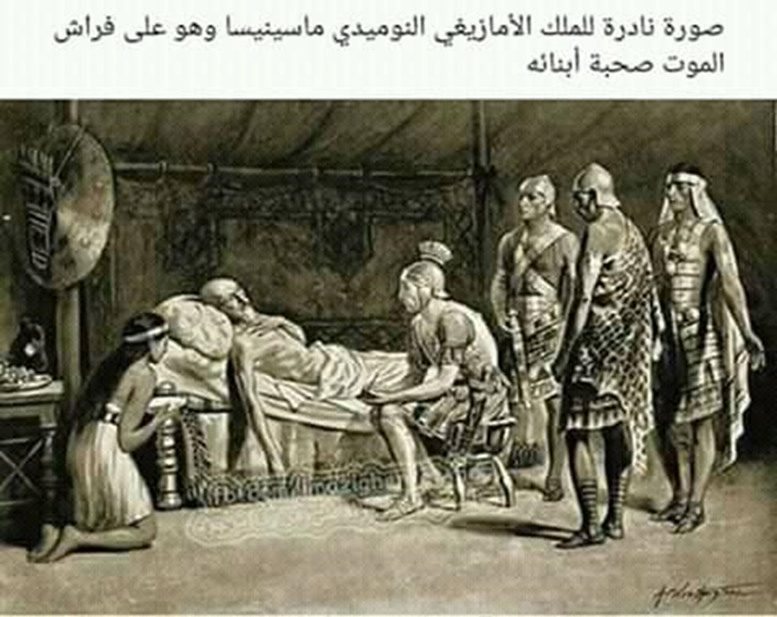Dr. Tayeb Boutbagalt writes: The first contacts of Moroccans with the Christian religion during the Roman era

The relative integration achieved by the Amazighs with the Phoenician and Carthaginian element, enabled them to open up to an advanced civilized reality. Thanks to their friction with the Carthaginians and their mixing with them in good times and bad, they discovered the nature of the conflicting forces in the Mediterranean basin, especially since they constituted the bulk of the cavalry and infantry army of Carthage, which had always defended its interests in its bitter disputes with its Greek and Roman neighbors. It is known that the three Punic wars that took place It took place between 264 and 146 BC, which eventually led to the complete destruction of Carthage and enabled the Romans to seize the coastal regions of North Africa and declare them colonies that Rome often aspired to acquire and exploit.
The Amazighs were not a single front against the advance of these invaders, but rather they were divided into parties loyal to Carthage and other parties seeking to win Roman sympathy, which quickly turned into mere Roman protection, and in the midst of the events Amazigh organizations emerged in the form of kingdoms led by leaders who were prevented by the prevailing tribal mentality at the time from absorbing The major cultural strategic bets.

Accordingly, the Amazigh leaders such as Sivaxo Massinsa, Jugurta and Juba I were not free in the idiomatic sense of the word Amazigh, as much as they were looking for the lost freedom under the weight of the Roman invasion, that invasion which European imperial colonialism of the nineteenth century AD is its legitimate heir in form and content. The Amazigh leaders were victims of the policy of discrimination that the Romans mastered in their mastery of towards them, and Juba II was one of the most surrendering to the Roman regime in its various political and cultural dimensions, to the extent that he built a special temple for the Roman Emperor Augustus, who became like a deity invoked and revered.

But this does not mean that the vast majority of the Amazigh peoples acquiesced in the fait accompli, - on the contrary, quite the contrary - and the Takfarinas revolution, between the years 17 and 24 AD, is only a simple example of the movements of rejection of Roman colonialism. The relations of all the Amazighs with the Romans were relations of persecution, exploitation, and confrontations rather than relations based on cultural convergence, and when the Christian religion appeared, some of them embraced it because it was in the same situation as them, suffering from systematic Roman oppression.
The Romans were known for their political shrewdness, practical strategic thinking, tight administrative organization, and advanced legal legislation. When they occupied North Africa, they divided it administratively into seven colonies of varying importance:

Africa, Bessina, Numidia, Mauritania, Setifia, Mauritania, Caesarea, and Mauritania of Tangiers (its capital is Tangier). This last colony was bordered by the Moulouya River to the east, Rabat (Chella) to the south, and the city of Volubilis as the farthest point in the center of the country. In the year 41 AD, Mauritania was formally annexed to the imperial colonial domain. What indicates the state of instability that characterized Roman rule in Morocco is the presence of military forces on semi-permanent alert, numbering ten thousand soldiers. Sale-Cologne (present-day Sale) formed the largest military base in Roman Morocco.
With regard to the religious situation, Christianity initially appeared as a stubborn opponent to the Romans, not recognizing their gods and not giving any value to their religious culture. The new religion in North Africa until the beginning of the second century AD, and three factors had characterized its historical development: persecution, heresy, and schism. In the last years of the second century AD, the Roman African colonies were the scene of widespread persecution against Christians.
This happened during the reign of Emperor Septimus Severus (193 AD / 211 AD), who made the Roman authority a hellish mechanism of oppression and torture directed against this new religion, and campaigns of persecution continued until they reached their climax in the middle of the third century AD. Among its results is the apostasy of a large number of Christians and the flight and disappearance of other numbers of them for fear of falling under the deadly Roman grip. In the month of August of the year 258, dozens of people were burned, their only sin was their conversion to Christianity, and this incident is known in Christian history as the “white mass.” .

Specifically, in Tangier Mauritania, it seems that the emergence of Christianity was relatively late and that its spread was narrow. The specialized writings refer to two Christian martyrs only, and they were not of Amazigh origin but of Roman origin, and they are the two military men Marcellus Socasius who were executed in Tangier at the end of the second century AD, The Romans deliberately issued a number of decrees that stipulated explicitly the persecution of Christianity in thinking and practice until the issuance of the Edict of Milan in the year 313 AD, which endorsed religious freedom for the benefit of Christians, and this shift was due to the policy of seeking stability at a time when the Roman Empire began in an unenviable position. on him.
The African Church was supposed to finally breathe a sigh of relief, but suffering of another kind was haunting it. It is the effects of the Donatian and Pelagian schism that were no less dangerous than the previous Roman persecution. The dispute was evident in the validity of some religious matters as well as in questioning the credibility of some The clergy, which resulted in a double episcopate that was embodied in the presence of a Catholic bishop alongside a dissident Donati bishop at the head of each church, and it is clear that the prosperity of the latter in North Africa, despite the number of its bishops, was superficial in many of its aspects, and this situation was not due to Roman persecution Not only internal dissension, but in fact it was unable to take root in the Amazigh community.

Yes, some of the indigenous people converted to Christianity because they undoubtedly found in it a support against foreign domination, including an elite that is considered one of the best poles of Christian thought to date, but we note that when Rome became the patron of the official Christian religion, the Amazighs did not hesitate to strengthen the ranks of the dissidents within Christianity itself. When the Amazigh circumcellas movement, which aimed to besiege colonial interests, emerged in the fourth century AD, it was natural for it to find in the Donatian dissidents the strongest support for the success of its uprising.
Source : websites

